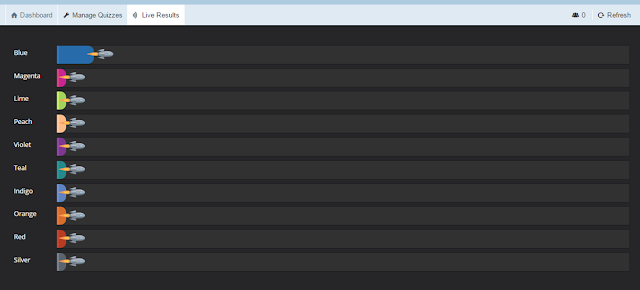During class time I made assumptions of certain students based on their in class behavior and questions they have asked, only to check test results and find my assumptions have been incorrect.
To aid my awareness of classroom results, I have created 2 quite simple additional pages in the spreadsheets that I was loading student grades into already; a Reporting Page and a Classroom Map.
The "reporting" worksheet. This allows me to colour-code the results, Green for strong results, smoothing down to Red for poor results. (Below is an embedded copy of student results, with names changed to protect the identity of the innocent)
The reporting sheet allows me to filters for student ranking, so for any given assessment I can rank the students, and I can quickly see if any students that typically do well in assessments have performed poorly in a particular assessment (or vice-versa).
This has been extremely helpful when reveiwing the student results. For example I can see that Gertude, who typically gets mid 90% grades, achieved below 80% in the investigation, and Chanel with results around 80%, achieved 100% in the investigation.
This simple information enabled me to have two very meaningful discussions with each of these students as to the variance in the of the assessment.
In coming weeks I expect a similar level of insight into the student's first semester exams.
I have also been using the comment functionality of Excel, to record when I have sent letter to parents, or any other important items for students, such as competitions they achieved strong results in or long term absence.
Below I have embedded my student management worksheet
(You are welcome to review in your browser or download a copy for yourself)
The second worksheet that I added was more beneficial to the earlier year levels. Using some vlookup function in excel, I have created a representation of my classroom, and linked it to the student grades.
This allows me to see the classroom hot spots (places with a lot of RED). This allowed me to pair students of differing ability levels, so they might provide some peer coaching. Additionally, where there are clusters of weaker students, I can ensure I am providing sufficient support and scaffolding of questions.
This may also provide some behaviour management benefits (and rearrange seating to redirect disruptive sstudents) but I am really aiming it to be an instructional tool (where do I need to provide help) and feedback mechanism (if the "green zone" is looking confused, I need to adjust the activity or instruction).
The above is a traditional classroom arrangement, but I do a similar arrangement for when my students are arranged in 5 large group tables. (This worksheet is included in my embedded Excel document, but the images do not embed, so the above is a screen capture of it).
I hope this might help any teachers looking to improve the way they use student results to provide tangible benefit to their classroom arrangement, or instructional method.











